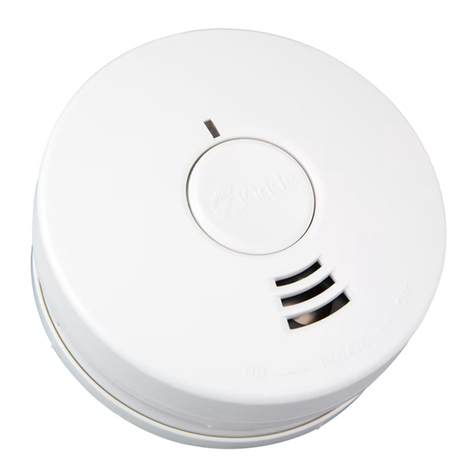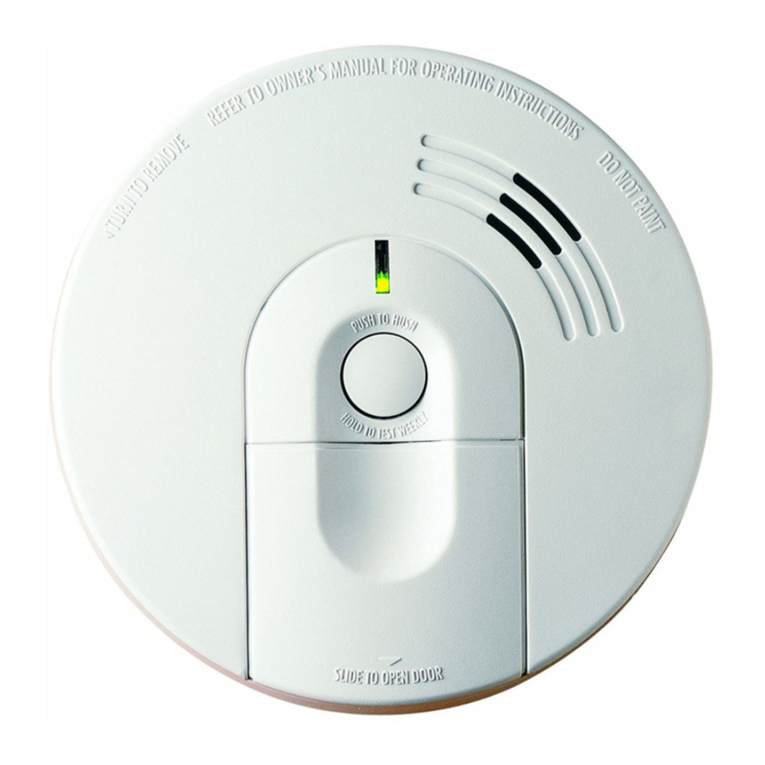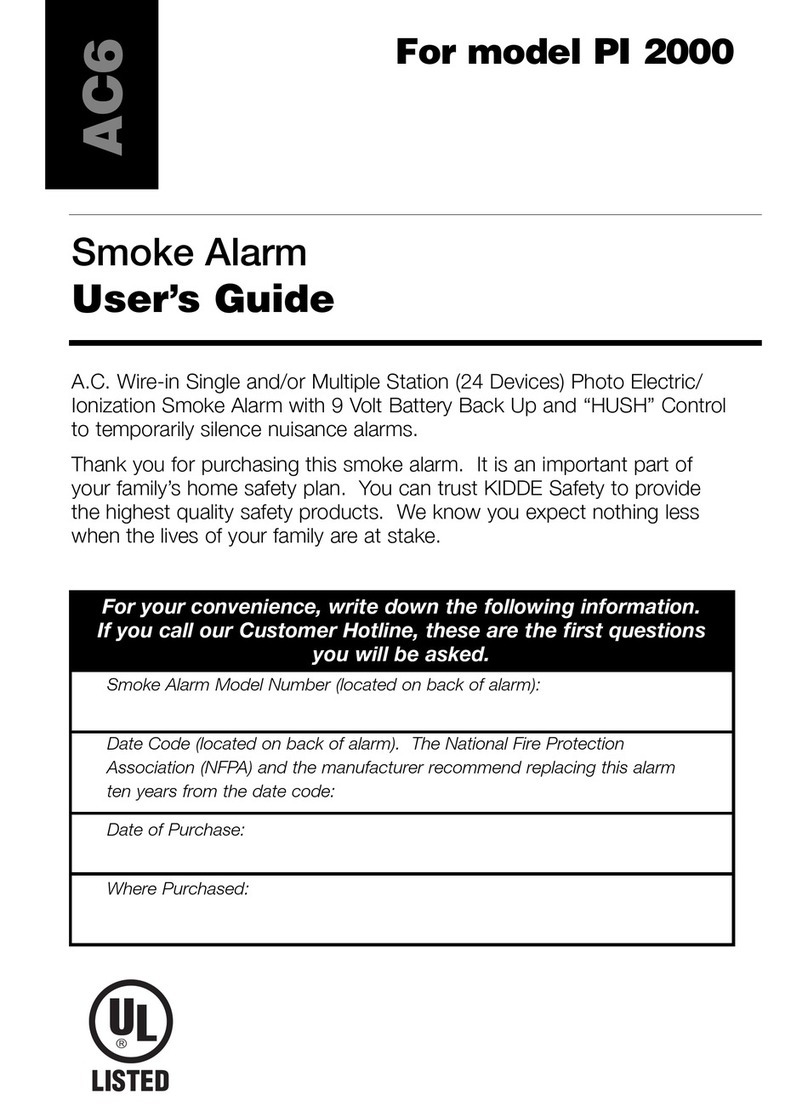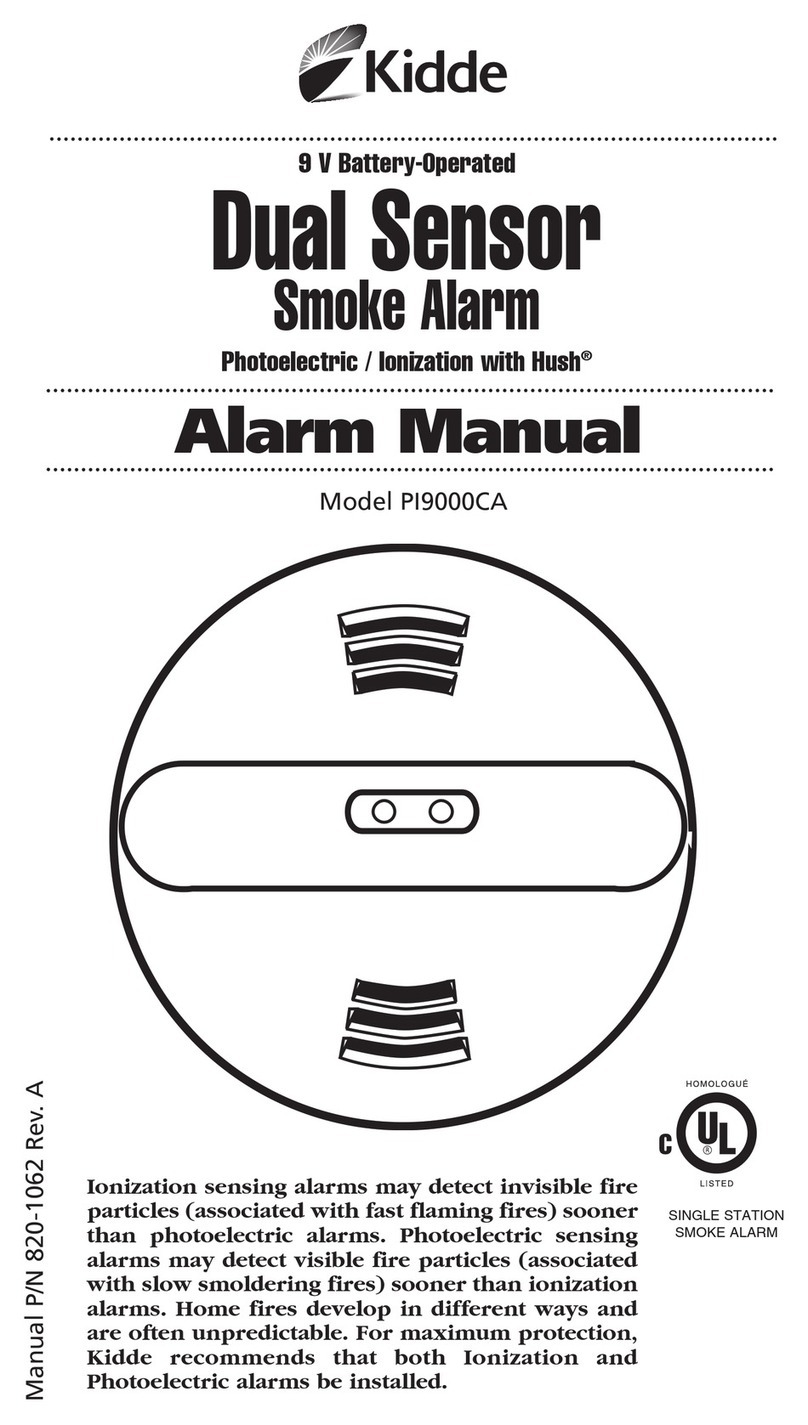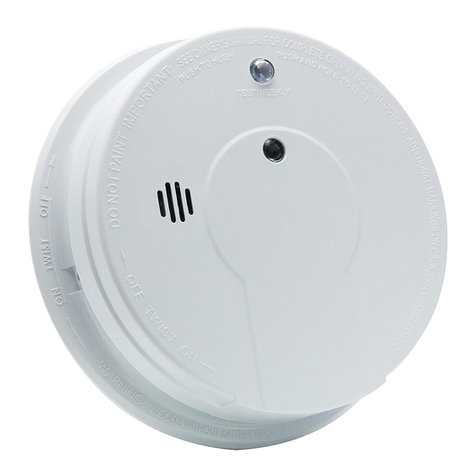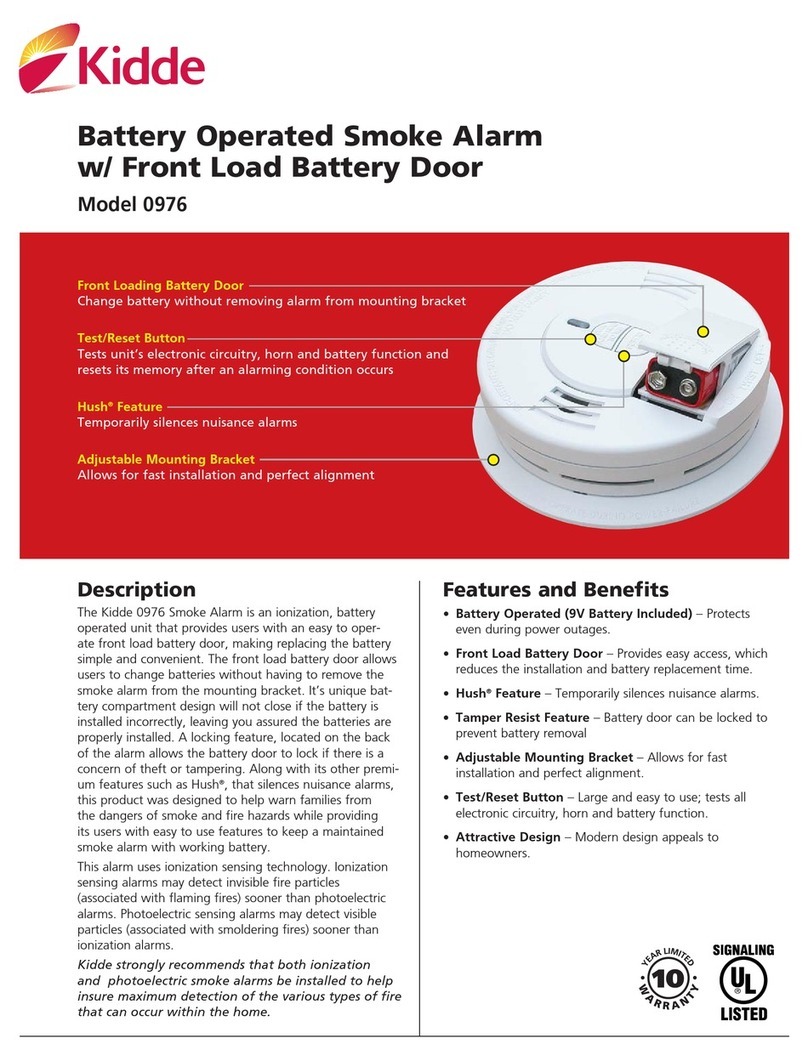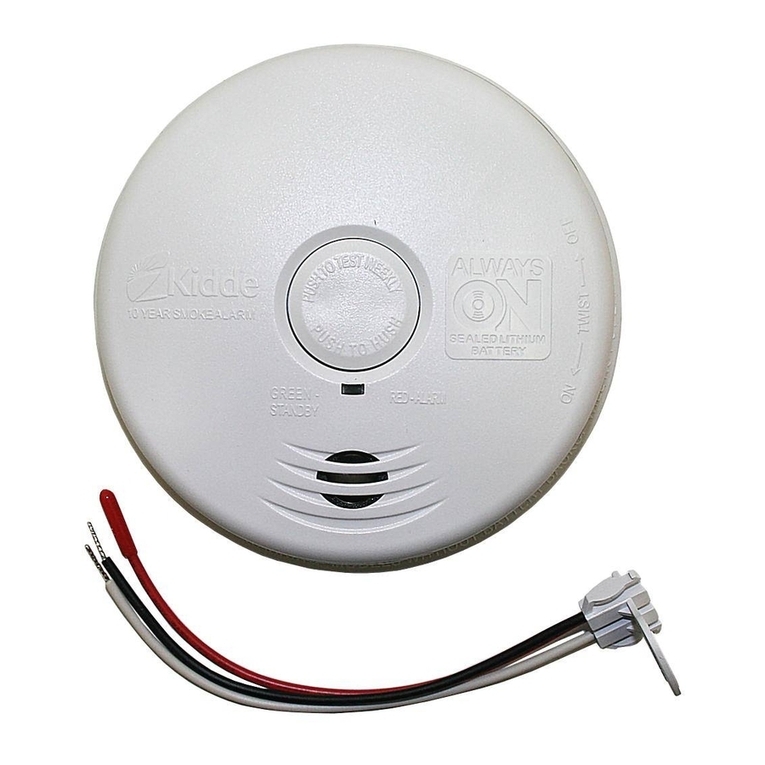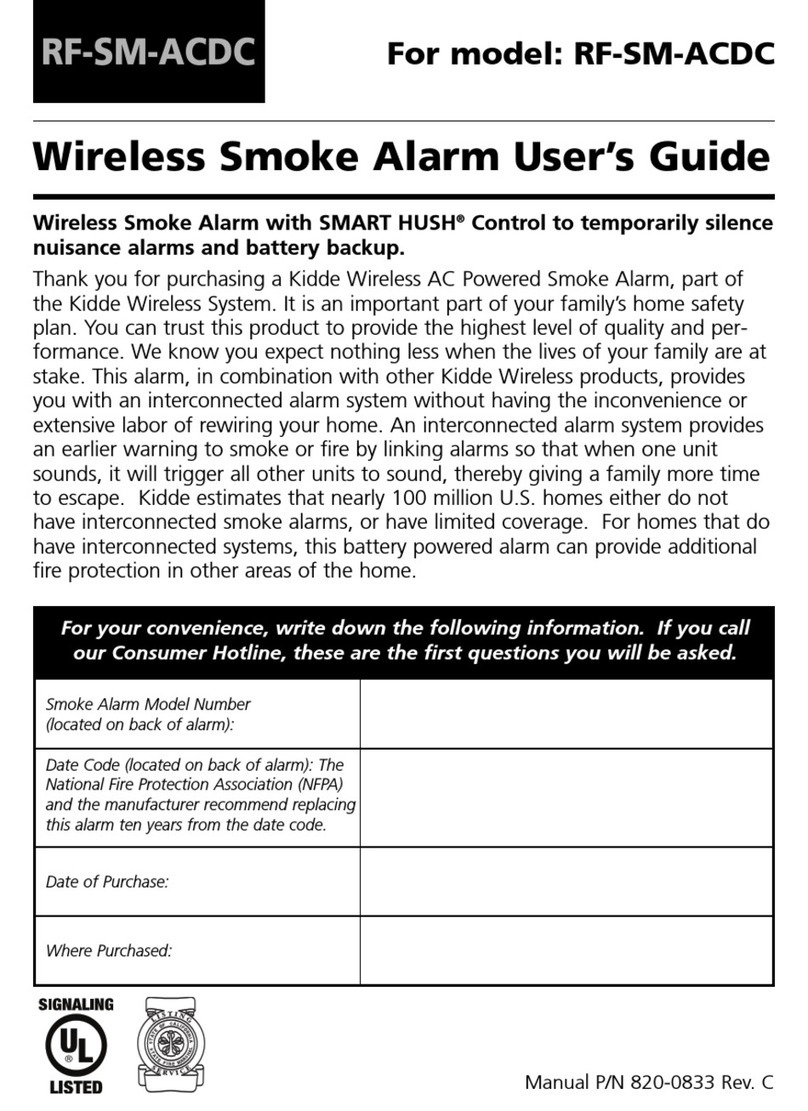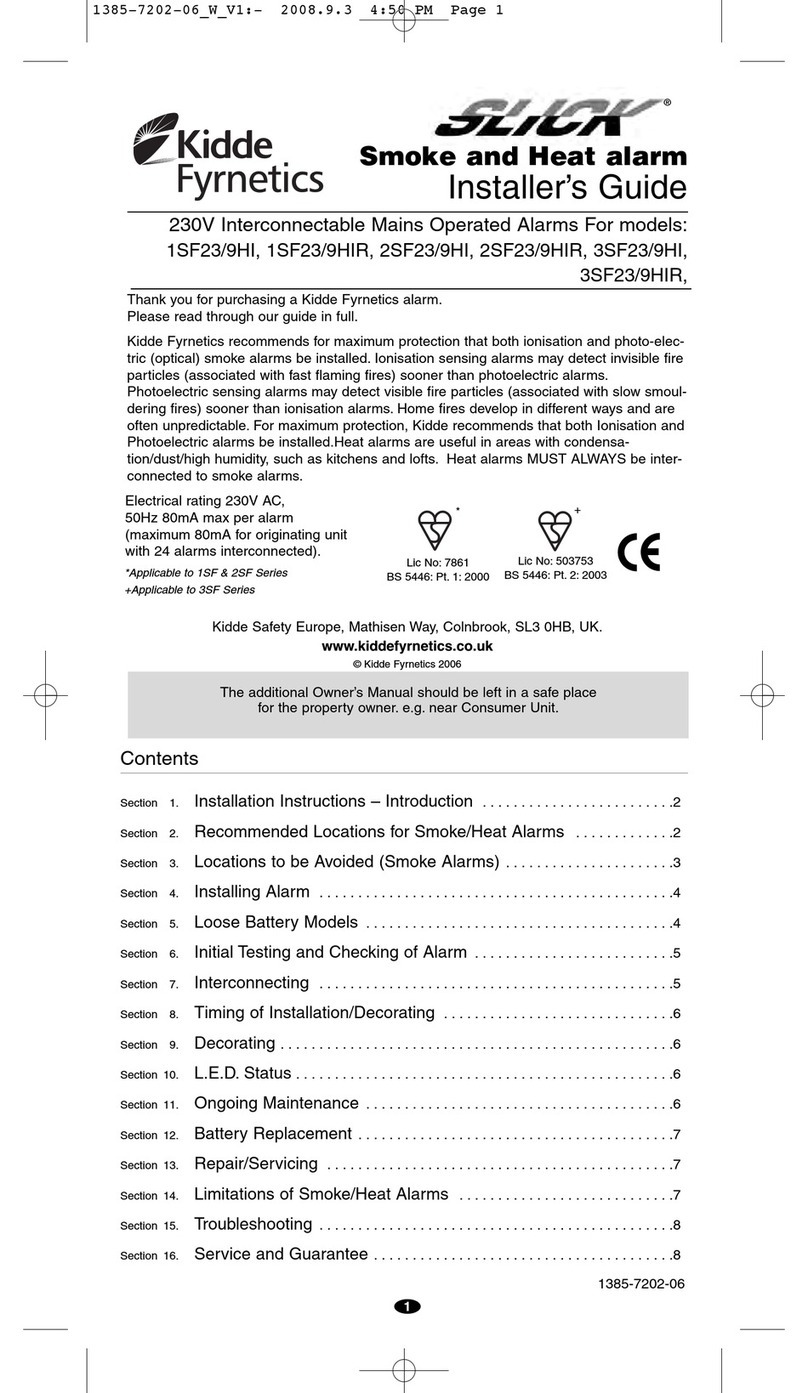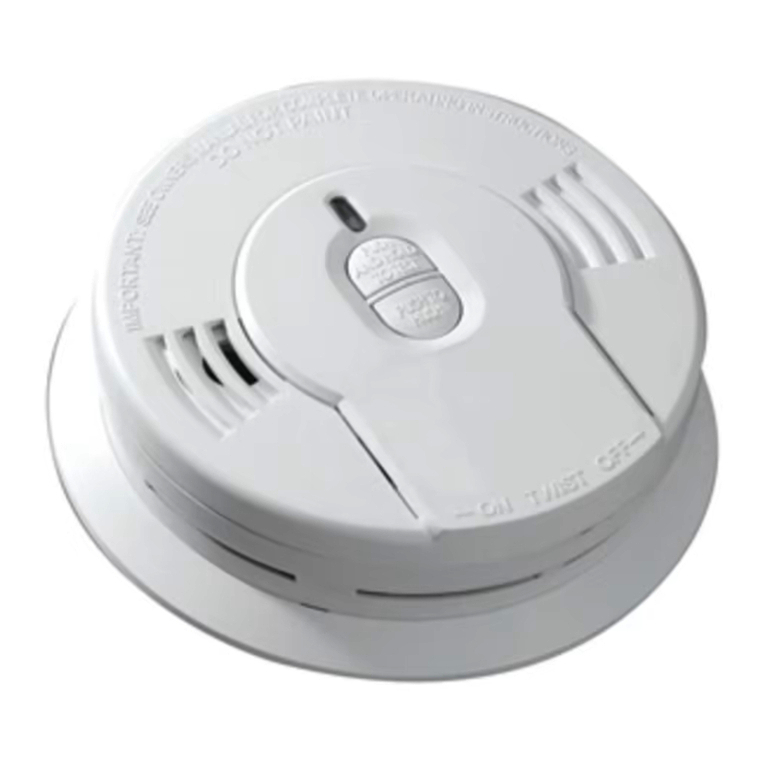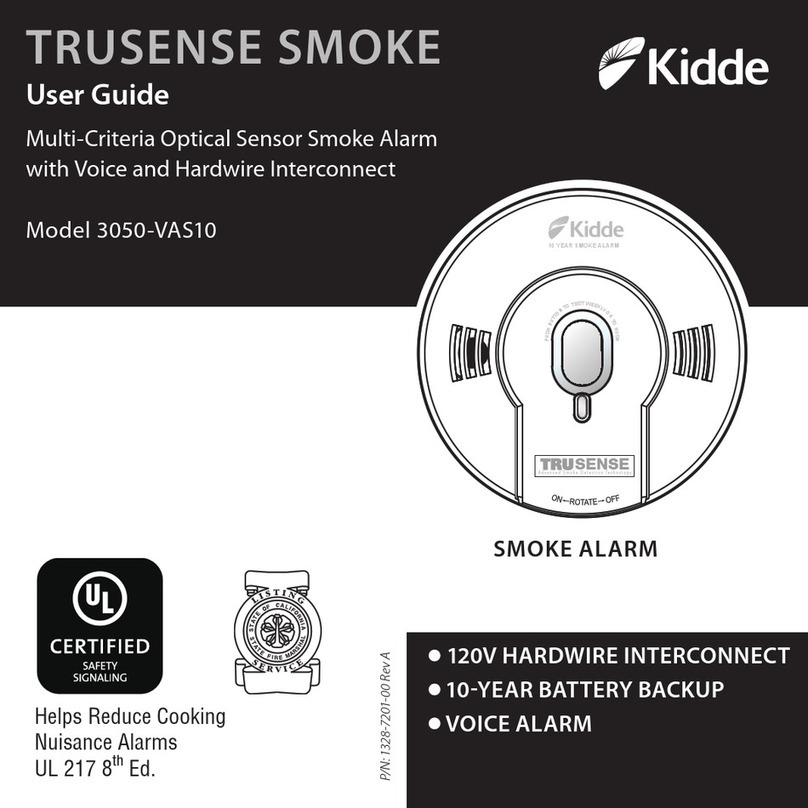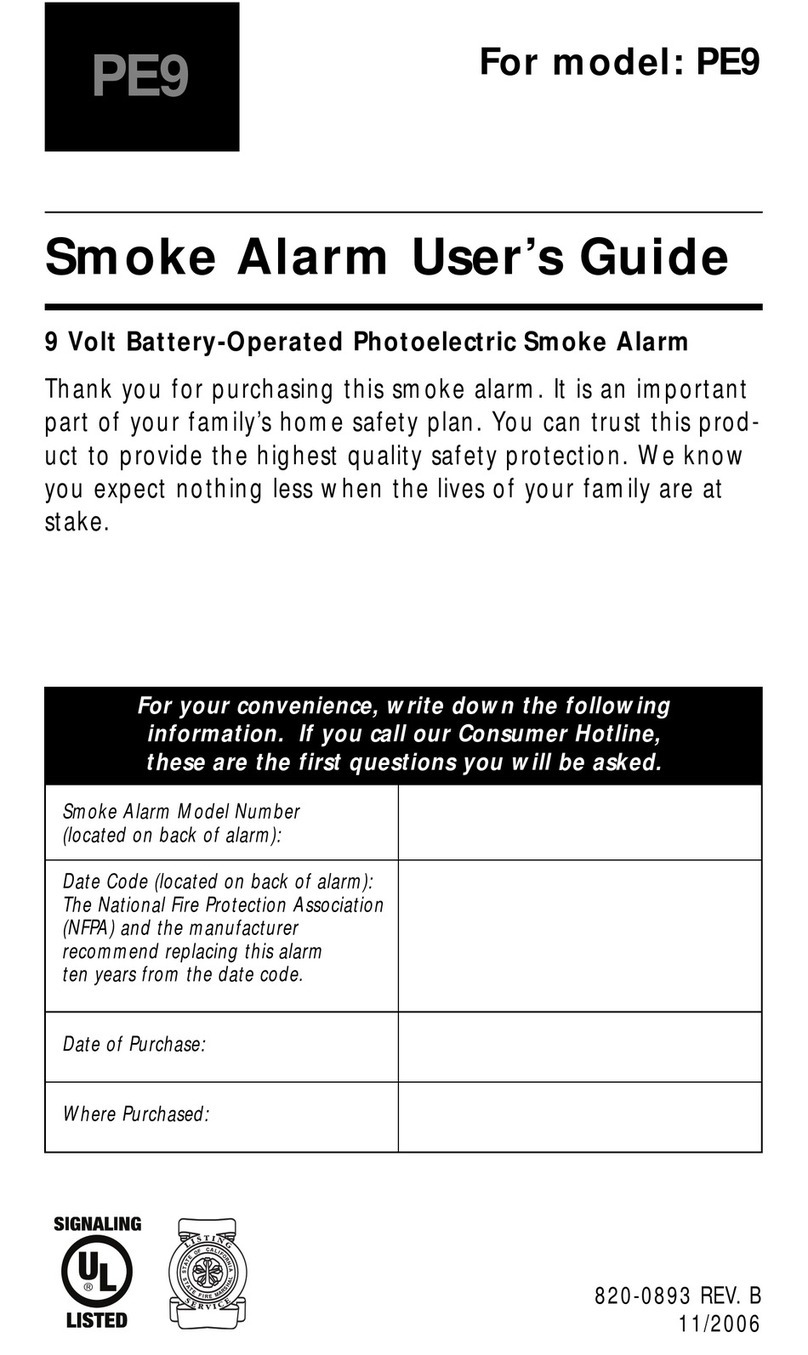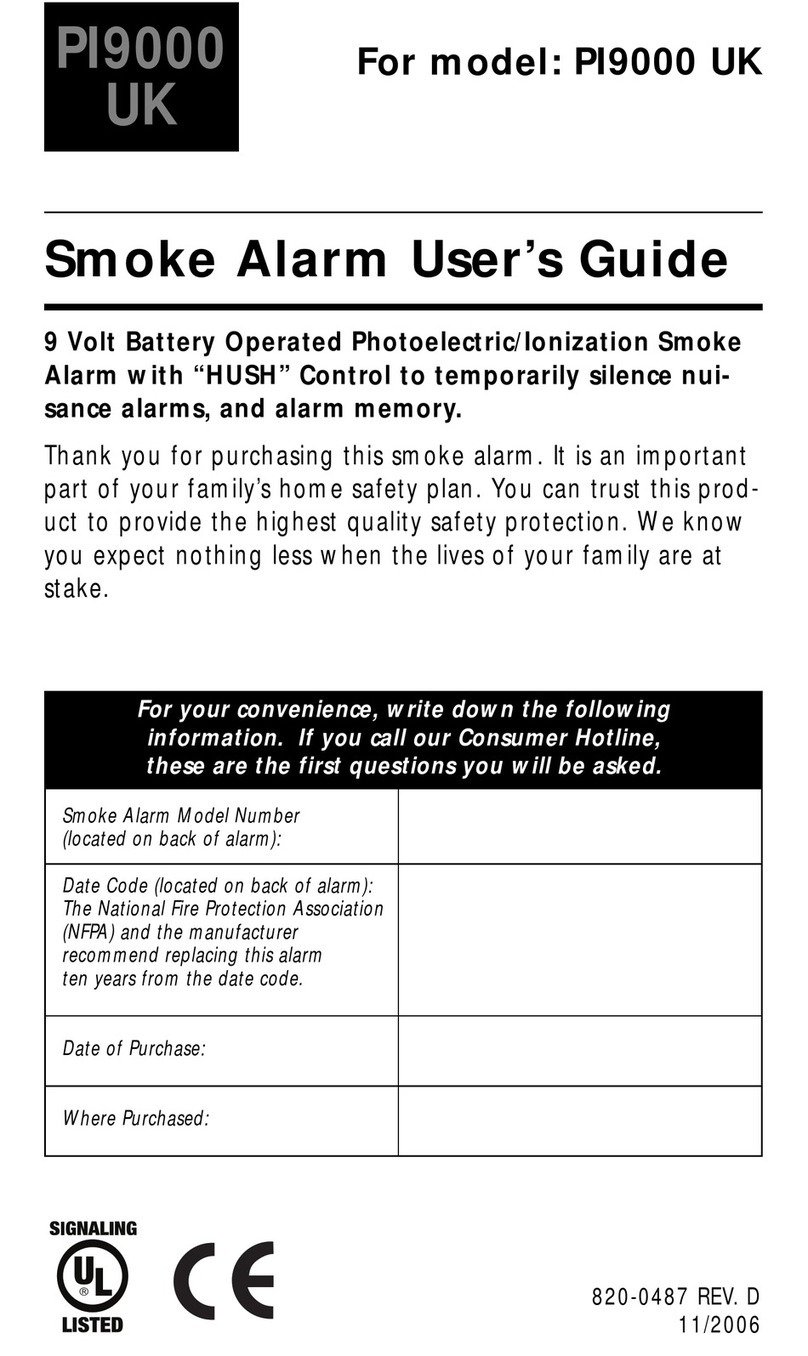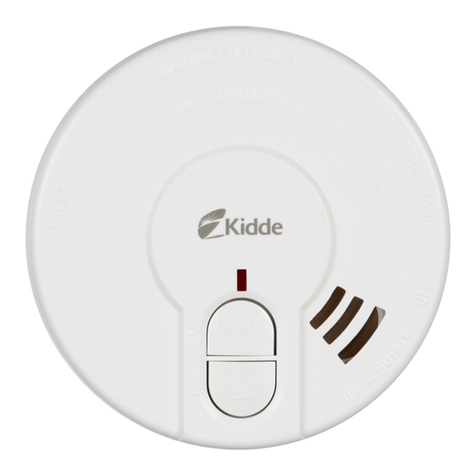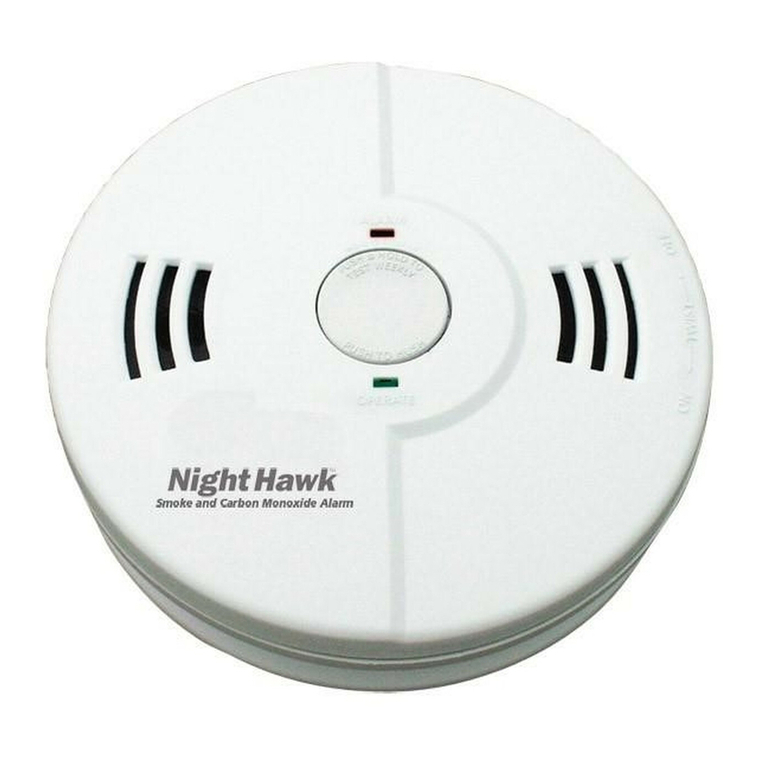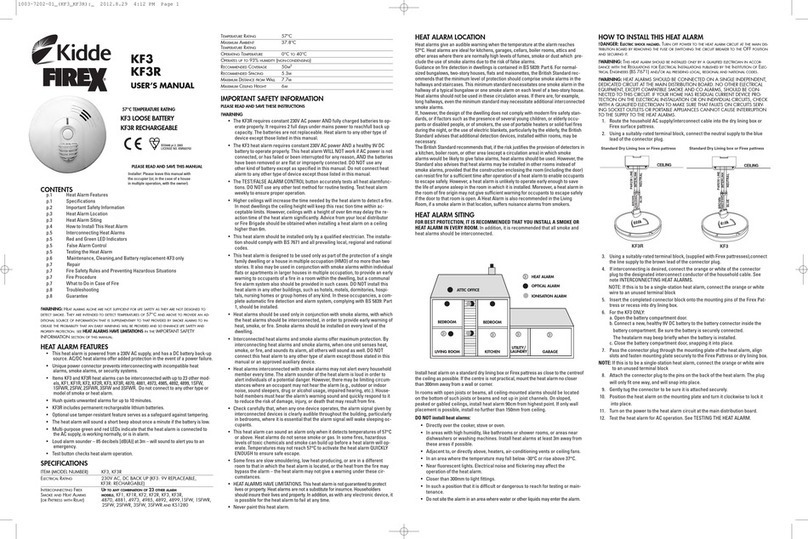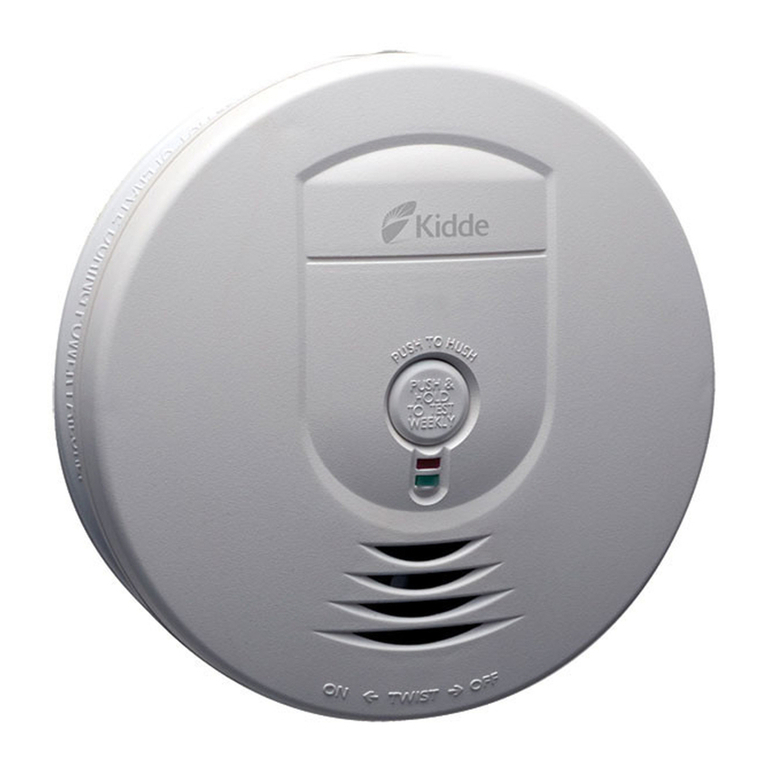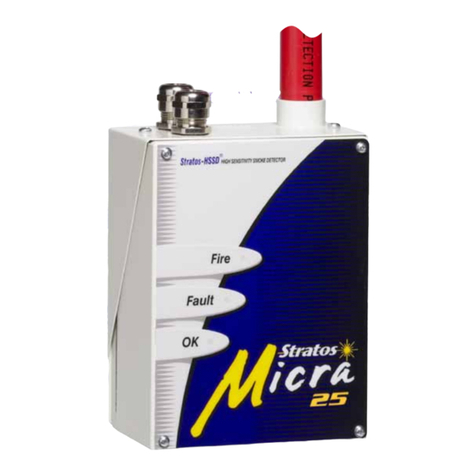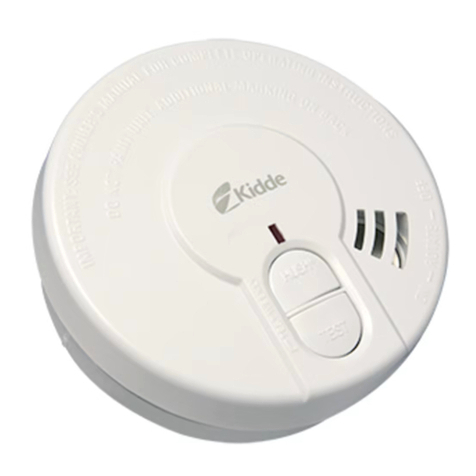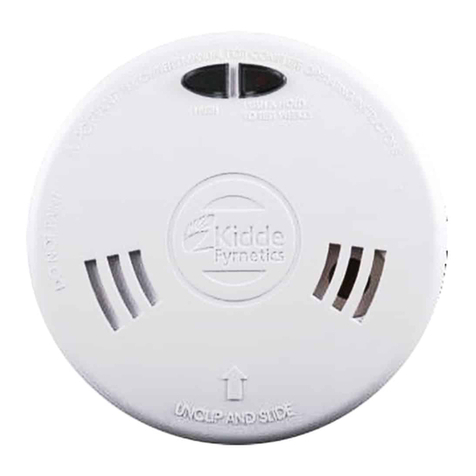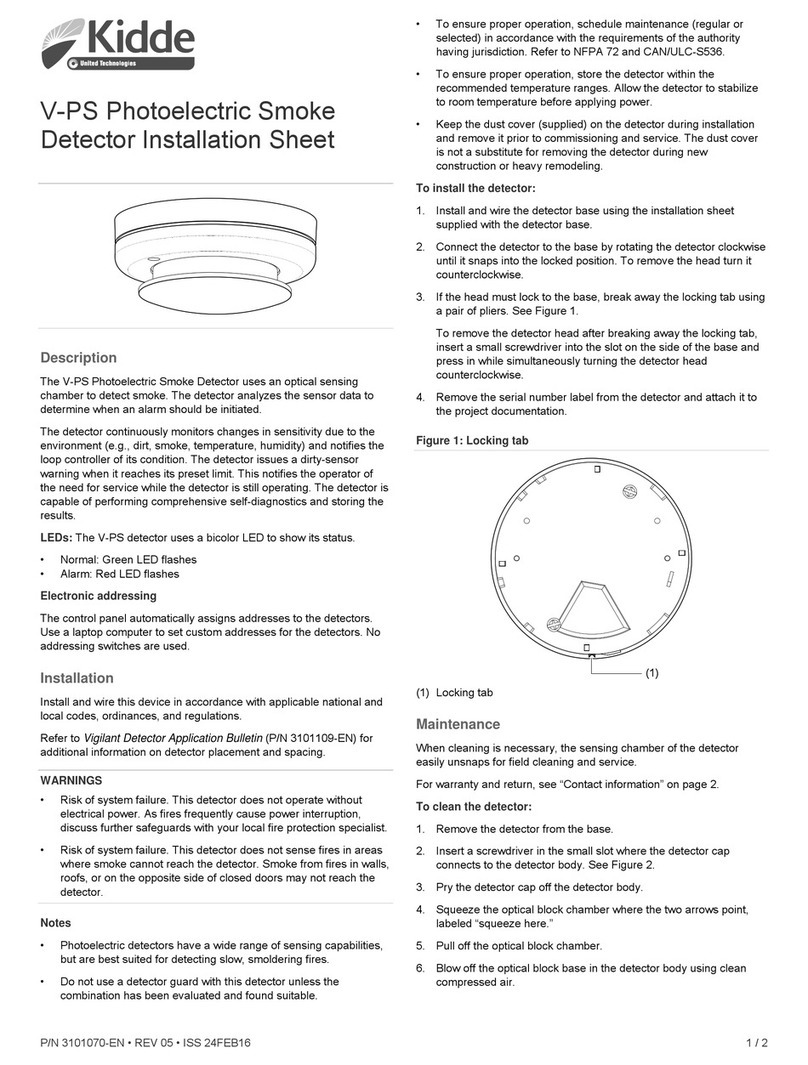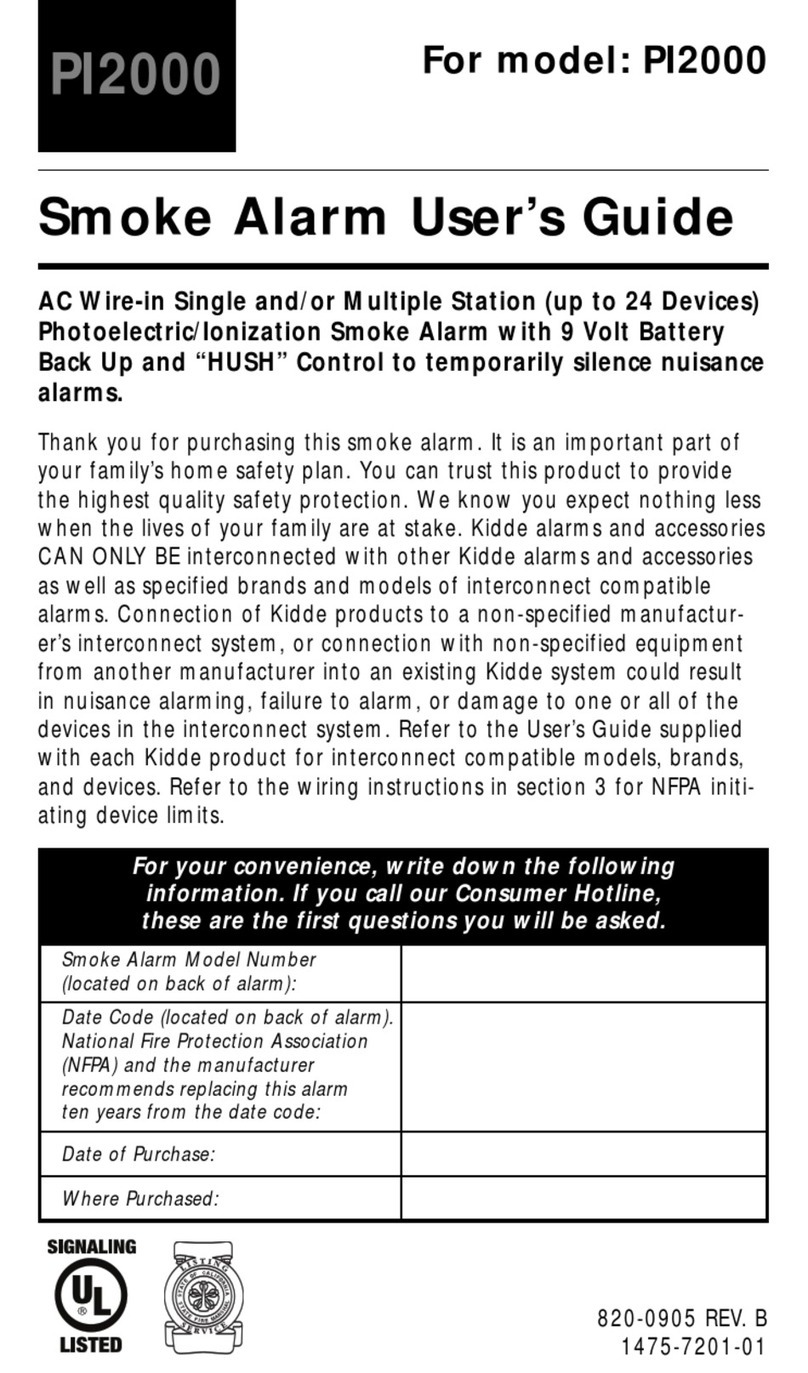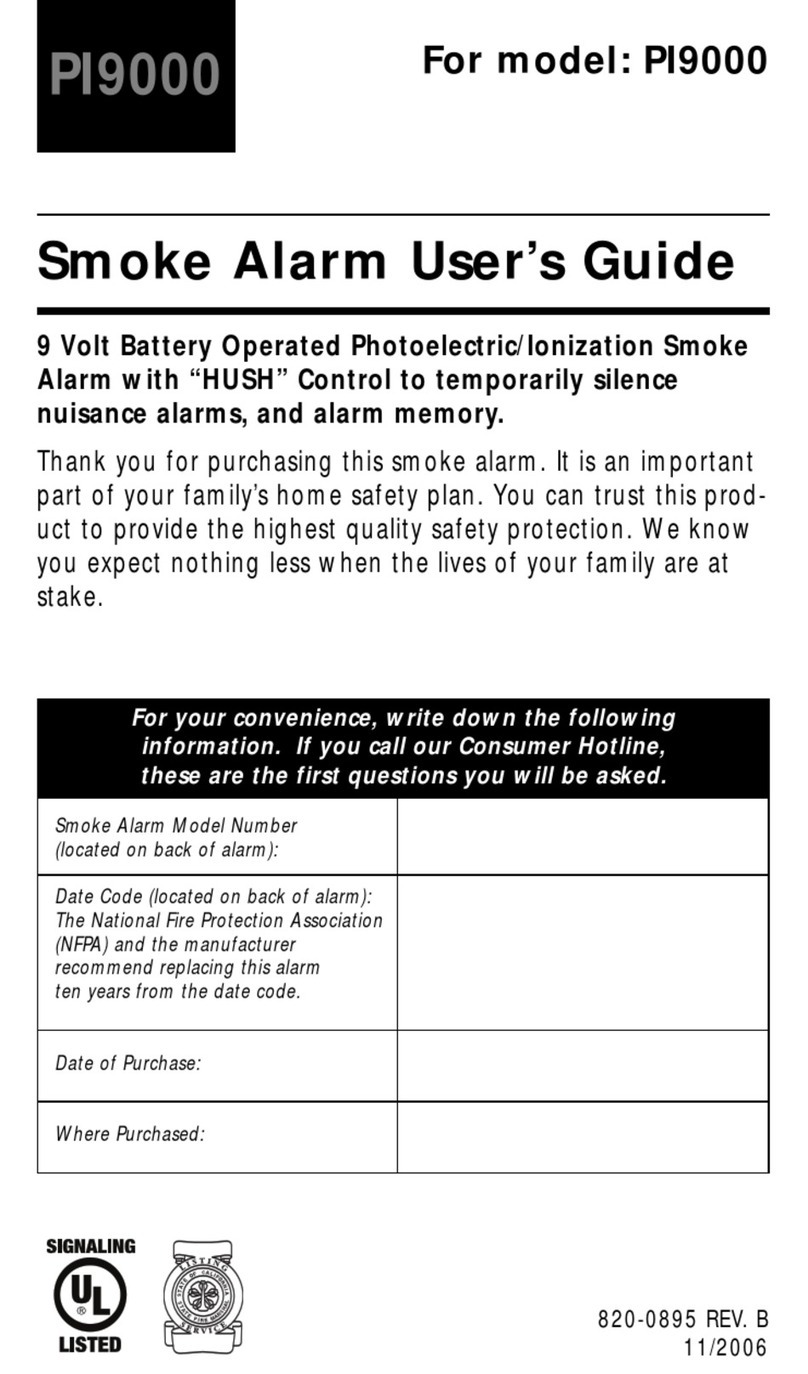
7
4. Troubleshooting Guide
3. Other Alarm Visual And Audible Indicators
Trouble Condition Visual Indications Audible Indications Action
False Low Battery
(AC power
connected before
backup battery
activated)
Amber LED blinks
every 5 sec.
Chirp and voice “Activate
Battery” every 60 sec.
* Rotate the alarm onto the
mounting bracket to activate backup
battery.
Low Battery
AC Power: Amber LED
blinks every 5 sec.
DC Power: Amber LED
blinks every 60 sec.
Chirp and voice “Replace alarm”
every 60 sec. (After 1 hour
on DC power, voice occurs
only once every 15 mins.)
Voice “Hush mode activated”
after button push (rst 7 days
only).
* Push button once to silence for 24
hrs. (Push button again to clear Hush
and perform a test.)
Note: 7 days after Low Battery begins,
the notications cannot be silenced.
* Remove, discharge, dispose unit, and
replace as soon as possible.
Fault: Smoke
Sensor Error
AC Power:
Amber LED blinks
every 5 sec.
DC Power:
Amber LED blinks
every 30 sec
Chirp every 30 sec, voice
“Smoke Sensor Error” every
60 sec.
(After 1 hour on DC power,
voice occurs only after button
is pushed.)
* See Cleaning Your Alarm section.
* Push button once to attempt to reset
the unit.
* If error continues, remove,
discharge, dispose unit, and replace
as soon as possible.
Fault: CO Sensor
Error
Chirp every 30 sec, voice
“CO Sensor Error” every 60 sec.
(After 1 hour on DC power,
voice occurs only after button
is pushed.)
* Push button once to attempt to reset
the unit.
* If error continues, remove,
discharge, dispose unit, and replace
as soon as possible.
Fault: Memory
Error
Chirp every 30 sec, voice
“Memory Error” every 60 sec.
(After 1 hour on DC power,
voice occurs only after button
is pushed.)
* Push button once to attempt to reset
the unit.
* If error continues, remove,
discharge, dispose unit, and replace
as soon as possible.
End of Unit Life
AC Power: Amber LED
blinks twice every
5 sec.
DC Power: Amber
LED blinks twice every
30 sec.
AC Power: Chirp twice every
30 sec, voice “Replace Alarm.”
DC Power: Chirp twice every
30 sec, voice every 60 sec for
rst hour, then every 15 min.
Voice “Hush mode activated”
after button push (rst 7 days
only).
* Push button once to silence for 24
hrs. (Push button again to clear Hush
and perform a test.)
Note: 7 days after End of Unit Life begins,
the notications cannot be silenced.
* Remove, discharge, dispose unit, and
replace as soon as possible.
